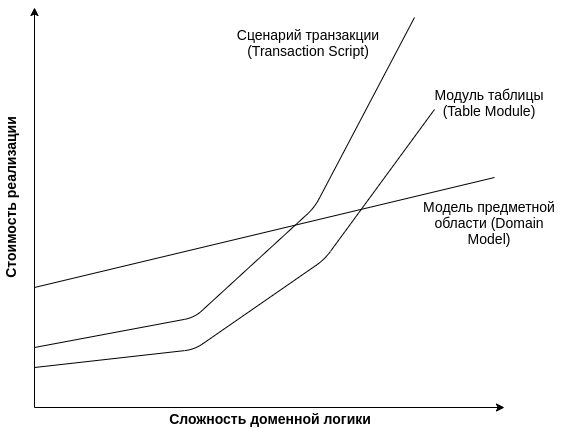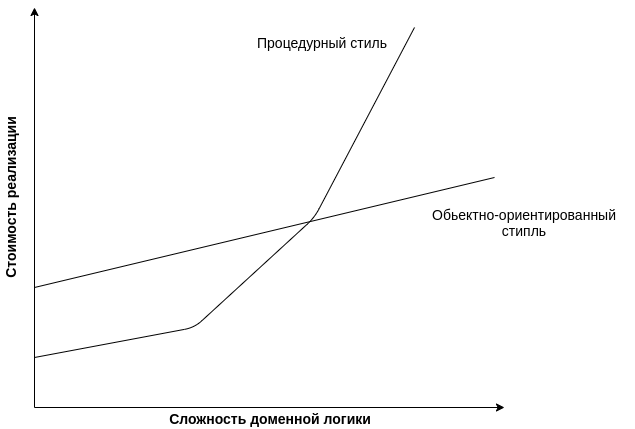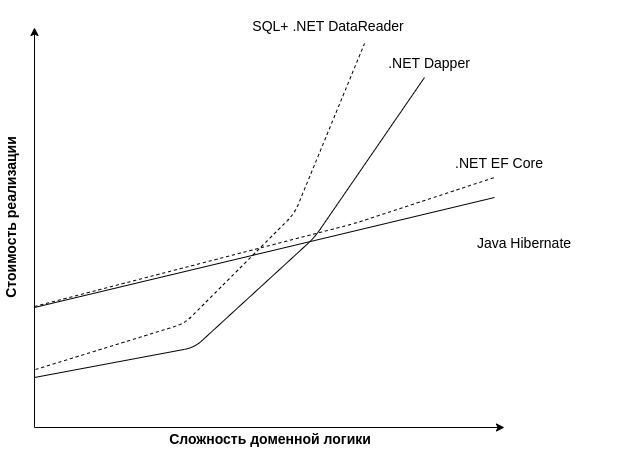The original article is located at
In this article we will try to find the answer to the question of notation in the title. And also we will speculate on the possibility of a universal solution for all occasions.
Three typical solutions when working with business logic according to Fowler
On the one hand, it is difficult to write about the organization of business logic in an application. It turns out to be a very abstract article. Fortunately, there are books where this topic is touched upon and even code examples. Martin Fowler in his book "Patterns of Enterprise Applications " identified three basic typical solutions. Transaction Script , Table Module, and Domain Model, the most basic of which is the Transaction Script. We will not discuss them in detail here - they are very well described in the original source with examples. For further reasoning, we will give only a diagram from the same book:

__ . . , -. ? , -. . ? , , . . . , - .. .. - , . , . - . - , 3- . - . - . . .
?
. . - . - .

, . , . C# Java, - , , -. , . . .
?
, , NoSQL ,NewSQL , json, .. . SQL , . , , ORM, Code First, DB First - . , -. .

, , . , Dapper . ORM Entity Framework . NoSQL , Neo4j, . .
?
, . ? - . . - . . , . - , SQL, , . , ORM - . , . - . , . - , , . , ORM - . - , (eventual consistency). , , . . SQL, ORM .
, :
.
, . , eventual consistency. .
"" - . - .
? , .